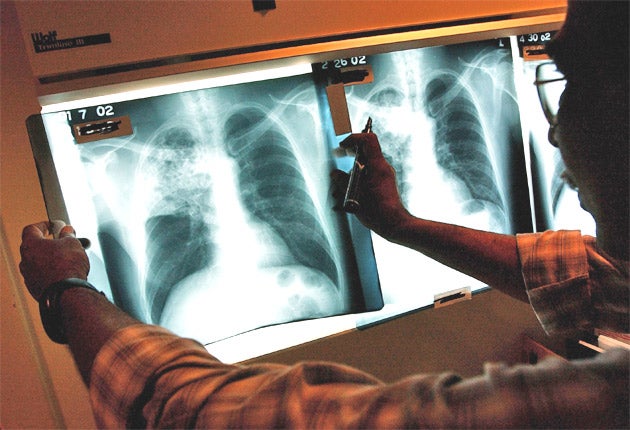High radiation puts child X-ray patients at risk
Requiring hospitals to publish exposure levels could eradicate huge variations in doses

Your support helps us to tell the story
From reproductive rights to climate change to Big Tech, The Independent is on the ground when the story is developing. Whether it's investigating the financials of Elon Musk's pro-Trump PAC or producing our latest documentary, 'The A Word', which shines a light on the American women fighting for reproductive rights, we know how important it is to parse out the facts from the messaging.
At such a critical moment in US history, we need reporters on the ground. Your donation allows us to keep sending journalists to speak to both sides of the story.
The Independent is trusted by Americans across the entire political spectrum. And unlike many other quality news outlets, we choose not to lock Americans out of our reporting and analysis with paywalls. We believe quality journalism should be available to everyone, paid for by those who can afford it.
Your support makes all the difference.Patients are being exposed to unnecessarily high doses of radiation during common X-rays and scans because some hospitals have out-of-date equipment and inadequately trained staff.
Variations between hospitals are so great that adult patients are exposed up to five times as much radiation for identical procedures. Children face the biggest risk, experiencing much larger variations as outside specialist units there are few clinicians with paediatric expertise or equipment.
The British Institute of Radiology will tackle the issue head-on later this month by considering ways to drive up local standards and reduce variations across the country.
Forcing hospitals to collate and publish radiation exposure results, which would allow the public and health professionals to compare departments, could help drive up standards, according to some clinicians and patients.
But many experts are against publicly 'naming and shaming' hospitals due to the complex factors involved in radiology procedures which they argue would not be reflected in simplistic league tables.
The risk of developing cancer from medical radiation doubles with every doubling of radiation exposure, but is still very low compared to smoking, alcohol and obesity, according to experts. Unborn babies and children are most radio-sensitive as their cells are still dividing and reproducing which means any damage to DNA should be avoided if possible.
Andy Rogers, a medical physicist and chair of the BRI radiation protection committee, told The Independent that while more could be done by sharing best practice, there was no need for parents to panic. "I am not fundamentally against league tables but nor am I properly convinced that the unintended consequence wouldn't do more than harm to patient health than good."
He added: "This is a very complex area and radiation doses are only one chapter of the whole story, and I'm not sure it's the right metric to measure quality on its own."
The Health Protection Agency (HPA) analyses radiation data from a voluntary, anonymous sample of radiology departments across the UK and publishes, every five years, national reference doses. These indicate how much radiation adults patients can expect, on average, from different procedures. It is up to individual hospitals to monitor their own performance and take action if these doses "consistently exceed" national levels.
For children, only three procedures are considered due to the small number of patients seen by many hospitals. The Independent has learnt that some hospitals do not analyse their paediatric performance for years at a time.
The danger of relying on national averages to stimulate best practice was first highlighted in 2006 when data from Great Ormond Street Hospital showed that their children were exposed up to 25 times less radiation. The disparities largely reflect superior equipment and expertise among radiologists and radiographers, more able to minimize doses despite a child's size, condition and compliance.
Dr Melanie Hoirne, paediatric radiologist and lead author of that paper, said: "We were trying to flag up what best practice can achieve and that hospitals should not be lulled into a false sense of security by the national doses levels... most individual hospitals do not publish their dose data so it is currently impossible to compare, so better data collection is something worth thinking about."
Dr Jill Meara, Deputy Director of the HPA's Centre for Radiation, Chemical and Environmental Hazards, said there was no evidence to suggest public health is being adversely affected by variations. She added: "There are no safe maximum levels for medical X-rays, and nor should there be; in an emergency any number of X-rays and scans could be justified to save a person's life. It's about making a judgement about whether a procedure is justifiable based on a patient's whole clinical picture at that time."
The Department of Health last night rejected the idea, stating it would be of no use to patients.
"The UK has a stringent, but proportionate system in place for regulating medical exposures… Hospitals and the Care Quality Commission would take action if European safe levels were being exceeded."
Join our commenting forum
Join thought-provoking conversations, follow other Independent readers and see their replies
Comments